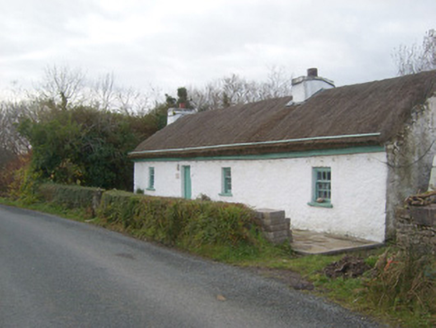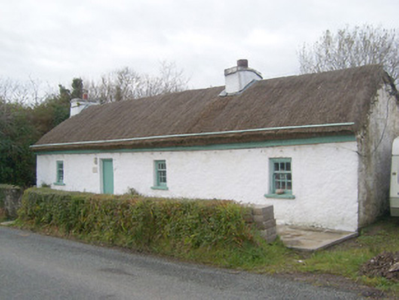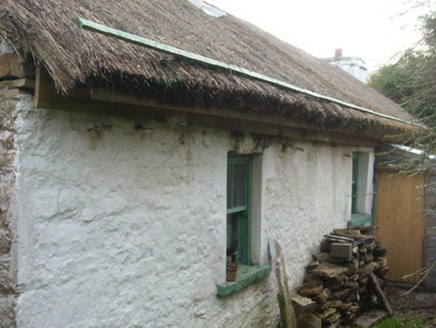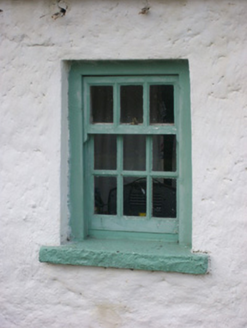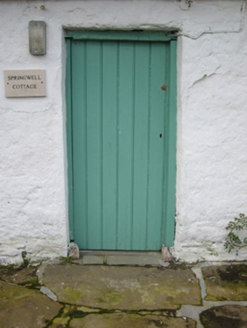Survey Data
Reg No
40909208
Rating
Regional
Categories of Special Interest
Architectural, Technical
Original Use
House
In Use As
House
Date
1860 - 1900
Coordinates
175698, 378233
Date Recorded
12/10/2007
Date Updated
--/--/--
Description
Detached four-bay single-storey vernacular house, built c. 1860, having single-storey lean-to extension to the rear (west). Pitched/domed straw thatched roof having metal and timber pegs below eaves level and to gable ends for securing ropes over thatch, and having two rendered chimneystacks (one to the south gable end and one offset to the north side of centre). Timber eaves course to front elevation (east). Corrugated metal-roof to extension. Whitewashed rubble stone construction. Square-headed window openings with cut stone sills and replacement three-over-six pane timber sliding sash windows. Square-headed door opening, offset to the north side of centre, having replacement timber battened door. Set slightly back from road adjacent to rural crossroads, and located to the north-east of Killybegs and to the north of Dunkineely. Hedge to front of site, pedestrian gateway having rendered gate piers.
Appraisal
This charming and well-maintained thatched vernacular house retains its early form and character, and is an appealing feature in the rural landscape to the north of Dunkineely. Modest in scale, it exhibits the simple and functional form of vernacular building in Ireland. Of particular interest in the survival of the thatch roof, although recently renewed, which is now sadly becoming increasingly rare in Donegal. The rounded roof is a typical feature of thatched houses located close to the sea in exposed areas in the north-west of Ireland, while the metal pegs to the eaves were used to tie ropes (and sometimes nets) over the roof to secure it against the prevailing winds, as is the case here at Calhame. Although the window and door fittings have been recently replaced, the modern replacements are sympathetic and compliment to form of the original structure. The location of the chimneystacks suggests that this building was extended by a bay to the north end at some stage, and that it conforms to the ‘direct entry’ type that is characteristic of the vernacular tradition in north-west Ireland. This house represents a fine surviving example of a once ubiquitous building type in the rural Irish countryside, and is an integral element of the vernacular heritage of the local area.
